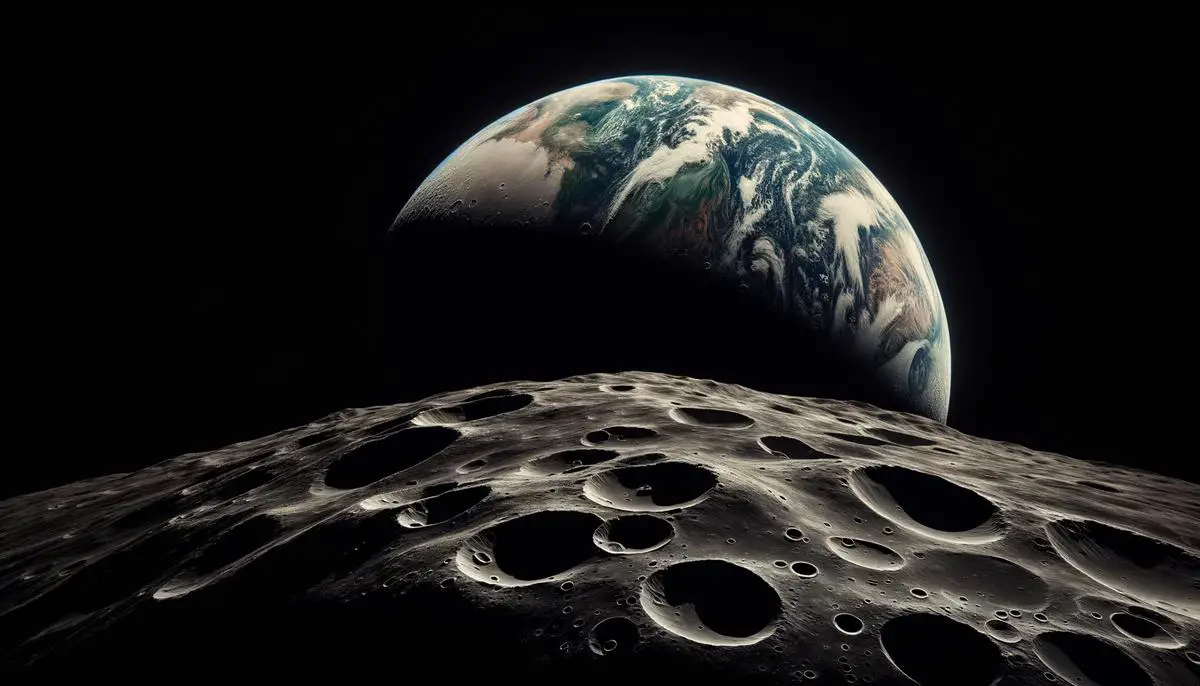Observing the Moon from its surface reveals a stark contrast to our familiar Earthly views. The absence of an atmosphere creates a black sky, where celestial bodies appear with unparalleled clarity. This article will explore the distinct phenomena and environmental conditions that make the lunar experience unique.
Black Sky
Standing on the Moon, the sky is a pitch-black void, devoid of the familiar blue hue we see from Earth. This stark difference arises because the Moon has no atmosphere. On Earth, our sky appears blue due to Rayleigh scattering, where sunlight collides with molecules in the atmosphere, scattering shorter blue wavelengths more effectively than longer red wavelengths.
In contrast, the Moon's lack of atmosphere means no scattering occurs. The sun shines starkly against the black sky, creating sharp, defined shadows. Without atmospheric interference, the stars remain visible even during lunar daytime, appearing steady and bright without the twinkle caused by Earth's atmospheric turbulence.
Earth, when seen from the lunar surface, presents a stunning visage—a large, colorful disk floating against the black backdrop. It undergoes phases similar to the lunar phases observed from Earth, gradually rotating in a fixed position in the sky.
The black sky, free from weather phenomena, lacks clouds, rainbows, or any atmospheric effects. Thus, the view remains constant and unaltered, providing a clear and unimpeded look at the cosmos.
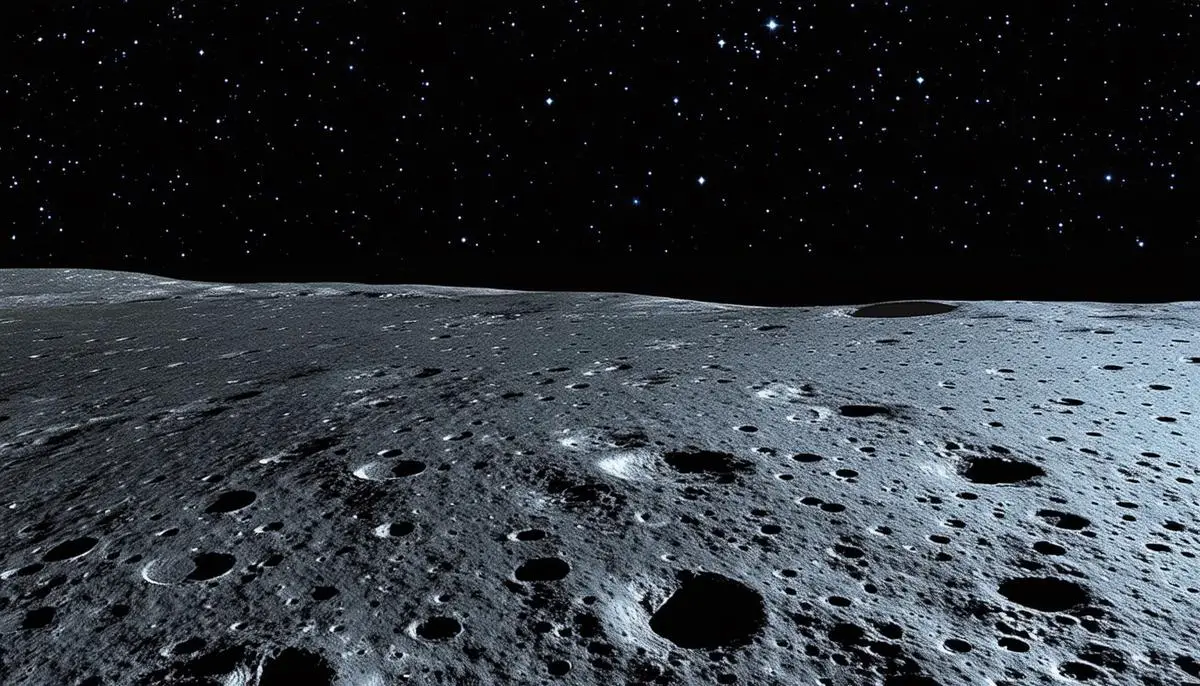
Sun, Earth, and Stars
From the Moon, the Sun stands out as an exceptionally bright beacon against the darkened sky. The absence of an atmosphere means there is nothing to diffuse or soften its light, resulting in strikingly sharp and well-defined shadows that trace lunar landscapes with precision. Unlike Earth's atmosphere, which scatters sunlight into varying hues of dawn and dusk, the Sun from the Moon's surface remains a steady, glaring white.
Earth commands attention as a large, vibrant orb suspended in the void. It undergoes phases, similar to lunar phases seen from Earth, cycling through crescents, gibbous shapes, and full phases. Earth's color palette is particularly interesting:
- Lush greens of sprawling forests
- Deep blues of the vast oceans
- Swirls of white clouds creating a dynamic, shifting portrait
The stars observed from the Moon are fixed points of light, enduring and unblinking. Unlike on Earth, where stars appear to twinkle due to atmospheric refraction, the lunar sky offers a stable, steadfast view of each star. This clarity allows for an unobstructed study of constellations and celestial movements, providing a view that appears almost surreal in its permanence.
The Moon's sky provides a serene, uninterrupted vista of the universe, allowing observers to reflect on the unique beauty of both our home planet and the boundless mysteries that surround it.
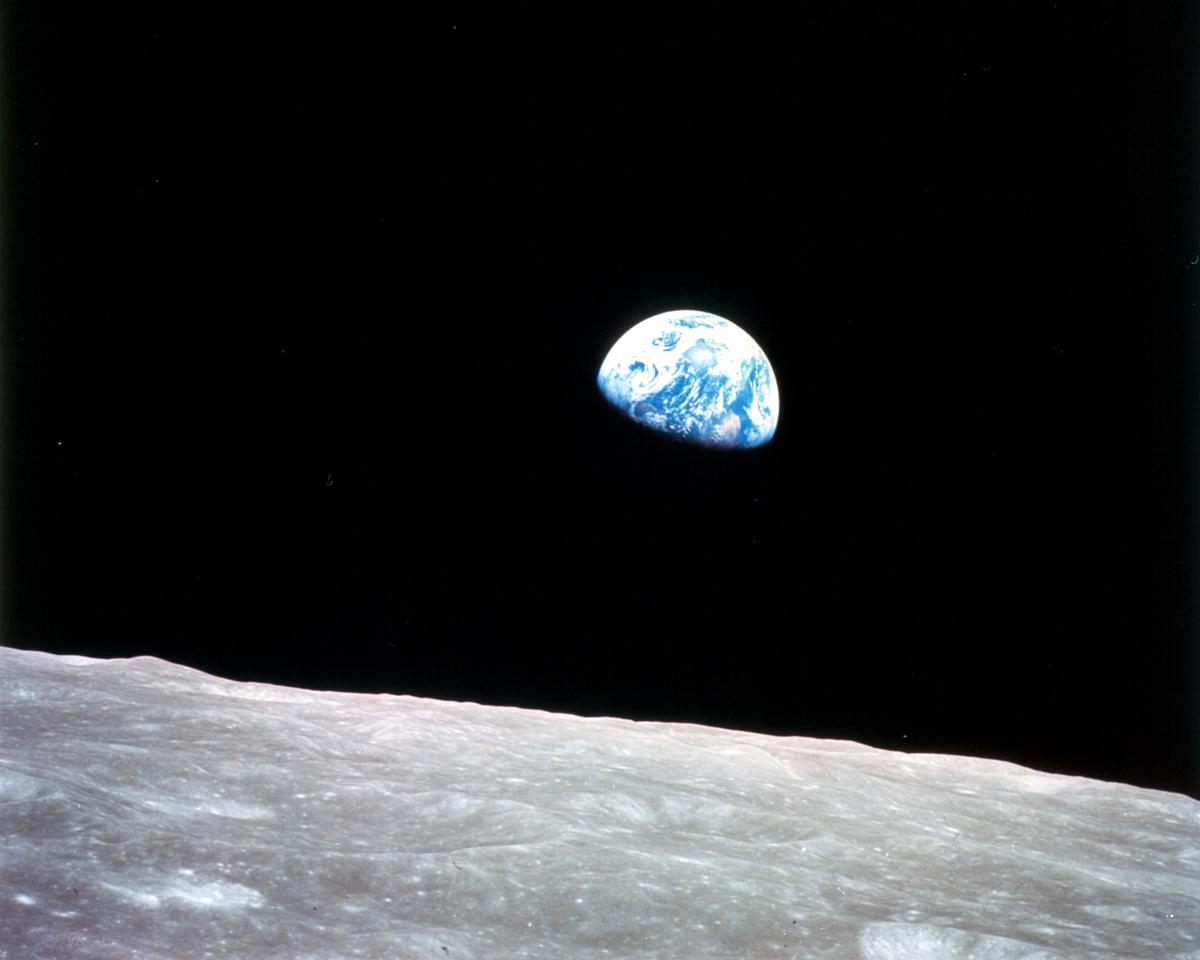
Lunar Day and Night Cycle
The Moon's day and night cycle unfolds over approximately 29.5 Earth days. This duration, known as a lunar day, is defined by the time it takes for the Sun to return to the same position in the Moon's sky, resulting in a cycle where any single spot on the lunar surface experiences about two weeks of continuous daylight followed by two weeks of uninterrupted night.
This extended period of daylight and darkness is a result of the Moon's synchronous rotation with Earth. The same side of the Moon consistently faces our planet, meaning that while the near side bathes in sunlight for half of this cycle, it then plunges into darkness for an equal duration.
Near the lunar poles, conditions become even more extraordinary. Due to the Moon's minimal axial tilt of just 1.6 degrees, the Sun hovers close to the horizon, casting long shadows. Some craters at the poles, known as permanently shadowed regions, have floors that sunlight hasn't reached in over 2 billion years. These regions maintain constant frigid temperatures and could possibly harbor water ice, offering a valuable resource for future lunar missions.1
The lack of an atmosphere on the Moon exacerbates the stark temperature fluctuations between its day and night:
- Daytime temperature: 260°F (127°C)
- Nighttime temperature: -280°F (-173°C)
This drastic shift occurs because there is no atmospheric blanket to retain heat.
Handling these extremes would demand advanced technologies and smart planning. Protective habitats with reliable insulation and temperature regulation systems, as well as advanced space suits designed to withstand both the heat and the cold, are essential. Similarly, energy solutions such as solar power would need to be carefully planned to harness the prolonged daylight periods efficiently while storing enough energy to survive the extended lunar nights.
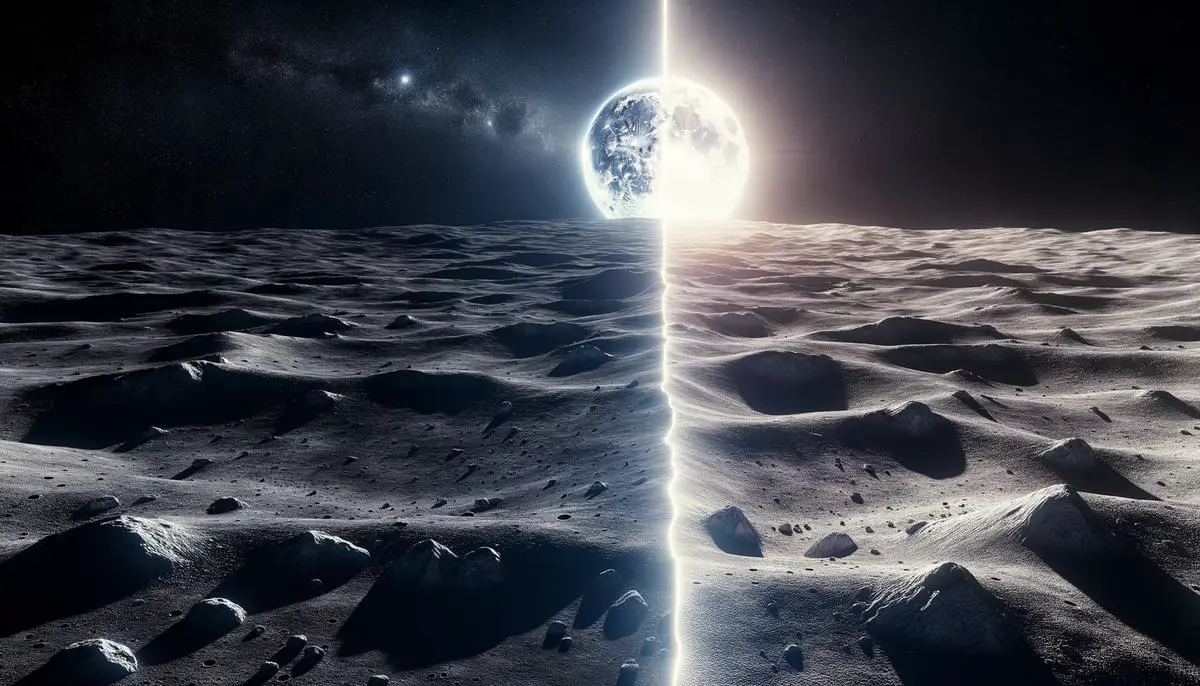
Astrological Events and Phenomena
On the Moon, meteoroids impact the surface directly, unencumbered by an atmosphere. Unlike Earth, where meteoroids often burn up upon entering the atmosphere, creating meteor showers, the Moon's lack of an atmospheric shield means these space rocks make direct contact with the lunar surface. When a meteoroid collides with the Moon, it creates an impact crater, sending ejecta flying outward. These impacts—sometimes observable as sudden flashes—contribute to the lunar landscape's pocked and cratered appearance.
The visibility conditions for these impacts are markedly different from the meteor showers we've come to admire on our home planet. On Earth, the atmosphere acts as both a barrier and a canvas, causing incoming meteoroids to glow brightly and sometimes disintegrate before they reach the ground. In contrast, these fiery trails and ephemeral streaks of light don't occur on the Moon. Instead, even the smallest impacts occur silently and swiftly, adding to the lunar surface's intricate pattern of craters without the accompanying visual fanfare.
The consistent visibility of stars without any atmospheric interference offers another remarkable feature of the lunar sky. On Earth, atmospheric turbulence causes starlight to shimmer and twinkle. However, the Moon, with its vacuum-like environment, offers a steady, unblinking view of stars. This unaltered and stable starlight allows for unrivaled clarity in celestial observation, providing a pristine backdrop that highlights the brilliance of distant objects.
This uninterrupted celestial view has profound implications for astronomical observations and the potential for lunar-based telescopes. Without atmospheric distortion, observations from the Moon could achieve an unprecedented level of detail, pushing the bounds of astronomical research. Future lunar telescopes could capture more precise images and gather more accurate data than their Earth-bound counterparts.2
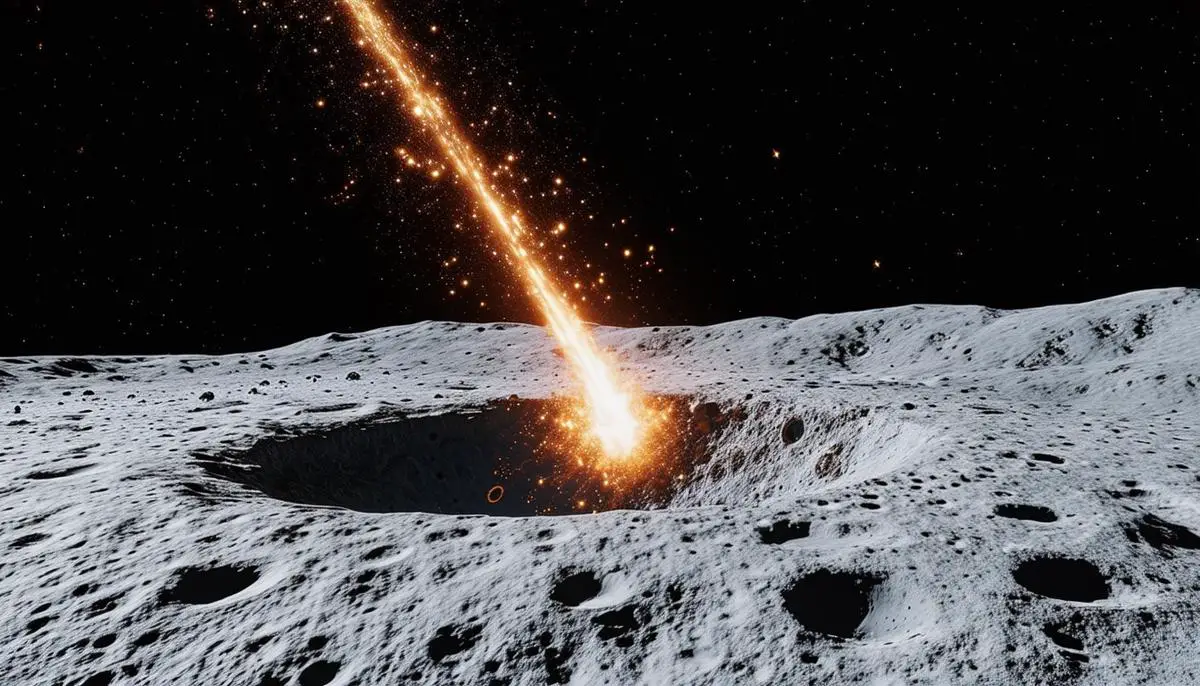
The Moon's unique environment offers an unfiltered glimpse into the cosmos, providing both challenges and opportunities for future exploration. The stark beauty of its black sky, coupled with extreme day-night cycles and direct meteoroid impacts, invites us to deepen our understanding of this airless world and its place in our solar system.
- Spudis PD, Bussey DBJ, Baloga SM, et al. Evidence for water ice on the Moon: Results for anomalous polar craters from the LRO Mini-RF imaging radar. J Geophys Res Planets. 2013;118(10):2016-2029.
- Angel R, Worden SP, Bely PY, et al. A roadmap for the development of astronomical telescopes on the Moon. Proc SPIE. 2008;7010:701023.
![]()
